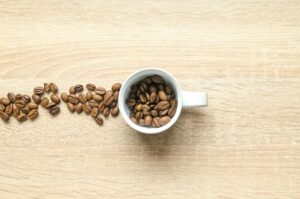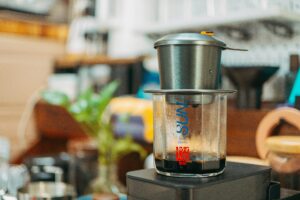If you’re a coffee enthusiast, you probably know the joy of savoring a perfect cup of espresso. The robust flavor, the rich aroma, and that beautiful crema on top—it’s a sensory delight. But have you ever wondered if you can use regular coffee beans for that perfect shot of espresso? This blog dives deep into the world of coffee beans and espresso, providing you with all the insights you need to brew your ideal espresso shot at home.
Understanding Coffee Beans
The Basics of Coffee Beans
Every bean tells a story. Coffee beans are the seeds of the Coffea plant, and their flavor profile is influenced by various factors like geography, climate, and soil. This makes each type of bean unique in its taste and aroma.
Types of Coffee Beans
There are primarily two types of coffee beans used globally—Arabica and Robusta. Arabica beans are known for their smooth, complex flavors and lower caffeine content. On the other hand, Robusta beans are more bitter and have a higher caffeine content, often used in espresso blends for their strong flavor and crema-producing properties.
Specialty Coffee Beans
Specialty coffee beans are single-origin beans that are often roasted to highlight their unique characteristics. These beans are ideal for those who appreciate nuanced flavors and are usually more expensive due to their high quality.
What Makes Espresso Unique?
The Art of Espresso
Espresso is not just another method of brewing coffee; it’s an art form. It involves forcing hot water through finely-ground coffee at high pressure, resulting in a concentrated coffee shot with a rich flavor and thick crema.
The Importance of Pressure
Pressure is crucial in making espresso. The standard pressure for pulling an espresso shot is nine bars, which ensures that the water extracts all the essential oils and flavors from the coffee grounds, creating that distinct espresso taste.
Crema and Its Significance
Crema is the golden-brown foam that sits atop an espresso shot. It signifies freshness and quality. The presence of crema indicates that the coffee beans were freshly ground, and the espresso shot was pulled correctly.
Choosing the Right Beans for Espresso
Espresso-Specific Beans
While you can technically use any coffee beans to make espresso, espresso-specific beans are usually a blend designed to provide a balanced flavor when brewed under pressure. These blends often combine Arabica and Robusta beans to achieve the perfect taste and crema.
Freshness Matters
Freshly roasted beans are essential for a good espresso. The fresher the beans, the better the flavor and crema. Ideally, use beans within two weeks of roasting for the best results.
Roast Level
Espresso beans are typically roasted longer to achieve a dark roast. This roast level brings out the rich, bold flavors that espresso is known for. However, medium roasts can also be used for a lighter, more nuanced espresso shot.
Grinding Coffee Beans for Espresso
The Perfect Grind
The grind size is crucial for espresso. It should be fine but not too fine. If it’s too coarse, the water will flow through too quickly, resulting in a weak shot. If it’s too fine, the water will struggle to pass through, making the shot overly bitter.
Burr Grinders vs. Blade Grinders
For the best grind consistency, use a burr grinder. Burr grinders crush the beans between two abrasive surfaces, ensuring a uniform grind size. Blade grinders, on the other hand, chop the beans, resulting in an uneven grind.
Adjusting Grind Size
You may need to adjust the grind size based on the specific beans you’re using. Different beans and roast levels can require slight tweaks in grind size to achieve the perfect espresso shot.
Brewing Your Espresso
Prepping the Machine
Before you start brewing, make sure your espresso machine is clean and well-maintained. Any old coffee residue can affect the taste of your espresso shot. Preheat the machine to ensure the water temperature is optimal.
Dosing and Tamping
Measure out the right amount of coffee grounds, usually around 18-20 grams for a double shot. Tamp the grounds evenly using a tamper to create a uniform surface. This ensures that the water flows through the coffee evenly, extracting all the essential flavors.
Pulling the Shot
Once everything is set, start the brewing process. The shot should take around 25-30 seconds to pull. If it’s too fast or too slow, adjust the grind size and try again.
Troubleshooting Common Issues
Bitter Espresso
If your espresso tastes bitter, it could be due to over-extraction. This happens when the water takes too long to pass through the coffee grounds. Try using a coarser grind or reducing the extraction time.
Sour Espresso
A sour taste indicates under-extraction, where the water flows too quickly through the grounds. In this case, use a finer grind or increase the extraction time.
Weak Espresso
If your espresso shot lacks flavor and body, it could be due to a low dose or coarse grind. Ensure you’re using the right amount of coffee and adjust the grind size for a more concentrated shot.
Enhancing Your Espresso Experience
Experimenting with Blends
Don’t be afraid to experiment with different bean blends. Combining various types of beans can result in unique flavors and profiles, enhancing your overall espresso experience.
Adding Flavors
While purists may prefer their espresso straight, adding a splash of milk or a dash of flavored syrup can create delightful variations. Try vanilla, caramel, or even a hint of cinnamon for a twist.
Investing in Accessories
Invest in a good quality tamper, milk frother, and espresso cups. These accessories can elevate your espresso-making process and enhance the final product.
Building a Coffee Community
Sharing Your Journey
Join online coffee communities or local coffee clubs to share your experiences and learn from other enthusiasts. Social media platforms like Instagram and Reddit have vibrant coffee communities where you can find tips, tricks, and inspiration.
Attending Workshops
Consider attending coffee workshops or barista classes to deepen your knowledge and skills. These workshops often cover everything from bean selection to advanced brewing techniques.
Supporting Local Roasters
Support local coffee roasters and shops. They often have unique bean selections and can provide valuable insights into different roasting profiles and brewing methods.
Conclusion
In the end, whether you use regular coffee beans or espresso-specific blends, the key to a perfect espresso lies in the details. From selecting the right beans and grind size to mastering the brewing process, every step contributes to that ideal shot. By following the tips and techniques outlined in this guide, you’ll be well on your way to becoming an espresso aficionado. Enjoy the journey, and happy brewing!
FAQs
Can I use any coffee beans for espresso?
While you can use any coffee beans, espresso-specific beans are often blended and roasted to provide the best flavor and crema for espresso shots.
How do I store my coffee beans?
Store your coffee beans in an airtight container in a cool, dark place to maintain freshness. Avoid storing them in the refrigerator or freezer as moisture can affect the beans.
What grind size should I use for espresso?
The grind size for espresso should be fine but not too fine. It should feel like table salt between your fingers.






